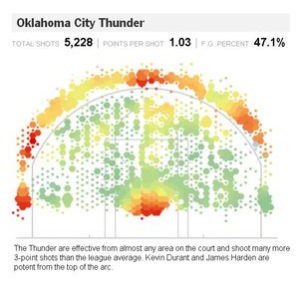 Sheryl Sandberg, the COO of Facebook, recently became one of the world’s youngest female billionaires. The Bloomberg article about this featured a curious quote from David Kirkpatrick, author of The Facebook Effect.
Sheryl Sandberg, the COO of Facebook, recently became one of the world’s youngest female billionaires. The Bloomberg article about this featured a curious quote from David Kirkpatrick, author of The Facebook Effect.
“Did she do a billion dollars-worth of work? I don’t know. She had the good fortune to land in the right place where her talents could really be applauded.” (link)
Critics rightly took issue with the gender-bias inherent in this remark. You’d be hard-pressed to find a high-profile business publication questioning whether a rich man really earned his wealth, I suspect.
But beyond this particular offense, the implication that anyone has done “a billion dollars-worth of work” is rather absurd. That this absurdity isn’t recognized speaks to both a general problem of numeracy and to a specific problem of contextualizing large numbers.
What would a billion-dollars worth of work look like? In some ways it’s an ill-defined question, but we can explore some simple cases to get a sense of the answer.
Consider someone working for the current federal minimum wage of $7.25 an hour. A convenient rule-of-thumb approximation is that one’s hourly wage, doubled, is one’s yearly salary in thousands of dollars. (This assumes someone works 40 hours per week for 50 weeks per year, and so, a total of 2,000 hours per year.)
A full-time minimum wage worker therefore earns about $15,000 per year. At that rate, 7 years of work would be worth around $100,000, and so 70 years of work would be worth around $1 million. Since one billion is equal to 1,000 million, we see that $1 billion is equivalent to around 70,000 years of minimum wage-work.
Would any billionaire claim to have worked an equivalent of 70,000 years at minimum-wage? I doubt it. Not publicly, at least.
Some other benchmarks may help establish further context. For example, the average teacher salary in New York state is around $45,000 per year. Roughly speaking, that’s $100,000 every two years, and so $1 million every 20 years. Thus, $1 billion dollars is worth around 20,000 years of teacher-work.
What about highly-paid professionals? Surgeons typically earn around $250,000 per year. A quick calculation shows that a billion dollars is worth about 4,000 years of surgeon-work.
While the article suggests otherwise, to me, the answer to the question “Has anyone done a billion dolllars-worth of work?” is pretty clearly “No”.
An interesting follow-up question might be, “Has anyone created a billion dollars worth of value?”
 In the workshop, students explored some basic properties of plane geometry through folding and tried their hands at the infamous fold-and-cut challenge: given a plane figure drawn on a piece of paper, is it possible to fold the piece of paper in such a way that the figure can be removed from the paper with a single, straight cut?
In the workshop, students explored some basic properties of plane geometry through folding and tried their hands at the infamous fold-and-cut challenge: given a plane figure drawn on a piece of paper, is it possible to fold the piece of paper in such a way that the figure can be removed from the paper with a single, straight cut?


